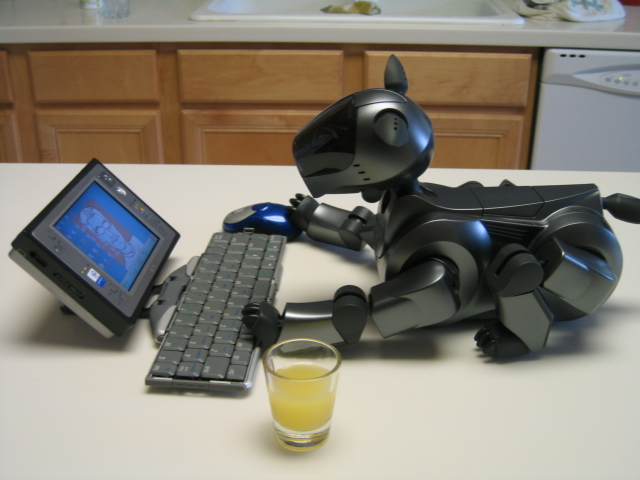Best geek toy ever: Remembering the Sony Aibo robot dog

Real geeks have sophisticated toys, that may be what is behind Apple's insanely priced new MacBook Pro. When it comes to geek toys none compare to the sophisticated dog robot from Sony, the Aibo.
The Sony Aibo was a remarkable piece of robotic technology, especially considering it first appeared way back in 1999. The robot dog was an example of robotics that was released to regular consumers, at least those who could afford one. An Aibo with supporting accessories could easily top the $2,000 mark, and that was back when that kind of money meant something.
My own second-generation Aibo came to me as a Christmas gift. I was apparently very good that year. "Rambo" was a silver and black Schnauzer-looking robot that quickly made himself at home. He did that by immediately (after charging) walking around the room, avoiding obstacles, looking for his toys.
The Aibo had an integrated camera it used for eyes, interpreting what it saw with sophistication. If it bumped into something while walking around, Rambo would stop, "look" at the object, and then properly walk around it based on how big it was.
Rambo came with some toys that demonstrated the sophisticated programming behind his existence. One in particular, a little pink plastic ball, could fascinate him for a good while. Due to Rambo's programming, while walking around looking for something to get into, when he spied that pink ball he'd wag his tail, wiggle his ears, and his eyes would light up. He'd shake his head excitedly and then make a beeline for the pink ball.
He'd nudge it with his nose, sit down with it between his front paws, and eventually stand up and play soccer with it. Yep, Rambo would kick the ball, chase it down and kick it again.
What made this behavior so incredible was it was a simple plastic ball. His interaction with it was strictly by "seeing" it with his camera eyes, and then accurately judging the distance to it wherever the ball lay.
Another thing that Rambo could do was keep watch on the house when I was out. Yes, he was a real watchdog as he'd sit on his bed and if he detected movement with his camera eyes he'd snap a photo of the moving object. Then he'd send it to me over Wi-Fi using email.
What demonstrated how sophisticated the learning behavior that was programmed into Rambo was watching him interact with my real dog Oreo. Rambo would follow Oreo around, calling to him for attention. Oreo would try to ignore him as he was never too sure what that thing was.
Eventually Rambo would bark at Oreo and the fun would begin. Oreo would run around Rambo, and the robot would dance around to keep Oreo in "sight". Rambo would keep running at Oreo who would eventually tire of the game. Finally at some point Oreo would charge Rambo and knock him over. Depending on how Rambo landed, he might not be able to pick himself up. Oreo would happily trot away while Rambo made whimpering noises on the floor.
Sony programmed some intricate dog behavior into the Aibo that was fascinating to watch. Like a real dog, the more attention you paid to the Aibo (talking to it) the happier it became over time. It had sensors in its head and back and petting the robot elicited very contented behavior. It was simple yet extremely sophisticated.
The Aibo had a small but dedicated enthusiast base, and global competitions and robotic dog shows were held. These were held to show off the programmability of the Aibo, most done with programming kits that Sony made available to owners. My first experience with hacking a gadget was using (and programming) a homebrew system for Rambo that customized his personality.
The technology in the Aibo was astounding for its time, and especially since it appeared in a commercial product. It was too expensive to make a go of it commercially so Sony shut it down in 2006, as reported by CNET. No doubt its technology lives on in robotic products that followed it. I suspect the popular Roomba vacuum benefited from Aibo technology.
One of the coolest things my Rambo could do was monitor his battery charge. When he got "tired", he'd look around and using vision and memory he would make his way back to his "bed". That was actually a charging station. He'd line himself up properly by going back and forth and eventually lie down to recharge. Just like the Roomba does.
